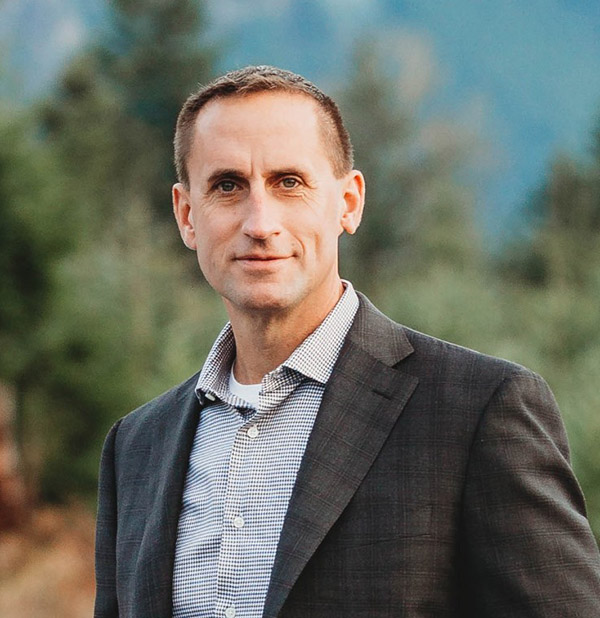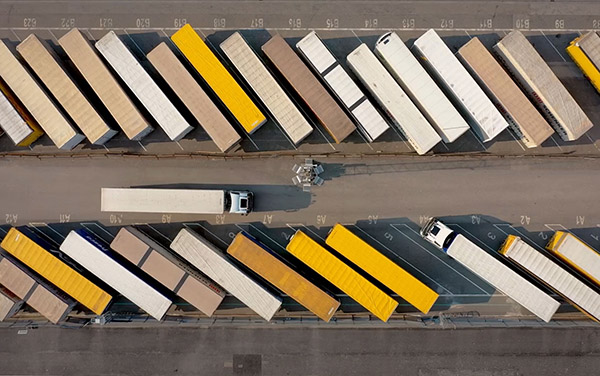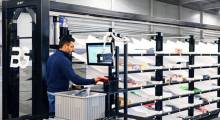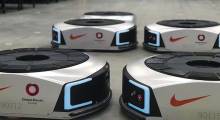From trade conflicts and the COVID-19 pandemic to chronic labor shortages, supply chains have been under stress for the past few years. CloudSort Corp. claimed that it has “reimagined” how to move packaged goods, starting with the middle mile between distribution centers and warehouses.
The Seattle-based company said its cloud-based network can optimize shipping operations through its partnerships with carriers and warehouses to sort cargo and increase its density, as well as more efficiently use warehouse space. Founded in 2019, CloudSort said it challenges the conventional “hub and spoke” transportation model, which is expensive to build and maintain and closed to third-party innovations.
“When we started the company, we wanted to redefine how we move packaged goods to the final station where that item will be delivered from,” said Derek Szopa, founder and CEO of CloudSort. “The value we bring is with what we believe is a new model and technology.”
CloudSort in the ecosystem
CloudSort said its software can dynamically route shipments according to each customer's requirements.
“We're confident that we have the intelligence to sort and route shipments and help others do it in the way they want,” Szopa told Robotics 24/7. “There are multiple instances where sophisticated shippers, 3PLs [third-party logistics providers], and carriers have offloaded responsibilities to CloudSort.”
The company also noted that carriers have had to invest in transporation and sortation and pass along the costs, leaving retailers and consumers frustrated when delivery expectations are not met. For the market to grow beyond the recent e-commerce boom, it will have to adopt more distributed services, said CloudSort.
Insights and infrastructure
CloudSort doesn't determine the cost of shipping a package; it provides data on what resources are available, said Szopa. The company's systems look at everything from warehouse space and truck capacity to flows between buildings, he added.

“We're showing managers how to activate their infrastructure in a better way,” Szopa said.
“Having a system that thinks globally instead of trying to optimize packages through a hub, we can skip the steps of a big industrial project,” he said. “This also pushes decision-making into the realm of software, which can learn and adapt over time.”
As with warehouse automation, CloudSort's approach also promses to democratize shipping, he said.
“The operations are small, cheap, and lightweight—it could just be a couple of scanners in a facility,” noted Szopa. “Very simple things can be deployed on the docks to tap into our system, where we can route things smarter to enable better quallity.
Integration can aid robots
The value of robotics in the warehouse is “compounded” by integrating CloudSort's data and sortation, said Szopa. By grouping items in containers by package size or destination, rather than loading them directly onto a truck, the company's software enables robots to work more efficiently, he said.
“With four or five standard containers moving through buildings, it's easier to load and unload trucks rather than a collection of e-commerce packages,” Szopa said. “There's not an infinite number of pallets and containers.”
CloudSort's system includes logic to provide a point of origin for how things should be grouped,” he added. “Some organizations have already done that, but we can just provide the execution system.”
Time to deployment
“The procurement process for package-delivery systems is usually a cumbersome process,” observed Szopa. “From RFP [request for proposals] to network carriers to determining the best cost for a service can take a while.”
“We decided, 'Let's provide an ecosystem. We should be able to test capacity in Salt Lake City,'” he said. “If provided a load plan, we have scanners and can do it in-house.”
“In one case, we got the keys to a building and started scanning packages the next day,” Szopa recalled. “We start simple and lean—that's the easy way to test and learn. We'd rather do that than spend a year talking about a complex solution.”

CloudSort identifies customer personas
To identify example customers who will understand and champion its data-driven approach, CloudSort has created a few customer personas.
“One persona is an end-to-end carrier focused on two-day delivery across the U.S.,” Szopa explained. “Not only can we provide dock operations and sortation engine, but also the physical infrastructure in the form of CloudSort-staffed and operated buildings and hosted capabilities.”
“Another customer persona is a 3PL that relies on us for middle mile transport,” he added. “It might use the U.S. Post Office for the final mile, but we can perform movement from DCs [distribution centers] around the country to post offices.”
CloudSort is developing two more personas. Some customers want to operate their own docks, and CloudSort would provide the software that allows them to group and ungroup shipments and run less-than-truckload (LTL) systms with existing capacity.
“Also, besides shippers, hosts come to us,” Szopa said. “They have the real estate and everything they need except for sortation technology. We can match what the shippers need with additional capacity on the supply side of demand.”
Looking back at Manifest and ahead to the rest of 2023
January's Manifest trade show in Las Vegas was a successful debut for CloudSort, said Szopa.
“For us, Manifest was the first show we've gone to as we make CloudSort's value proposition more widely known,” he said. “Since we're focused on the middle mile rather than retailers or 3PLs, we were interested to see others enabling this ecosystem.”
“There were retailers, but also robotics, autonomous trucks, and other technologies supporting the e-commerce and delivery ecosystem,” Szopa said. “We'll go again next year.”
This year, CloudSort plans to spread the idea of hosts supporting the middle-mile ecosystem. “Nobody is doing at the scale we're doing it,” remarked Szopa. “It's similar to the company-owned store versus a franchise.”
He said he expects the technology to continue to improve and bring more information on how goods move and how they could move more efficiently.
“From an industry standpoint, package volumes are not growing as fast as early in the pandemic, but that's good,” Szopa concluded. “People are more realistic and are more interested in collaboration, which helps us.”
About the Author
Follow Robotics 24/7 on Linkedin
Article topics
Email Sign Up
















